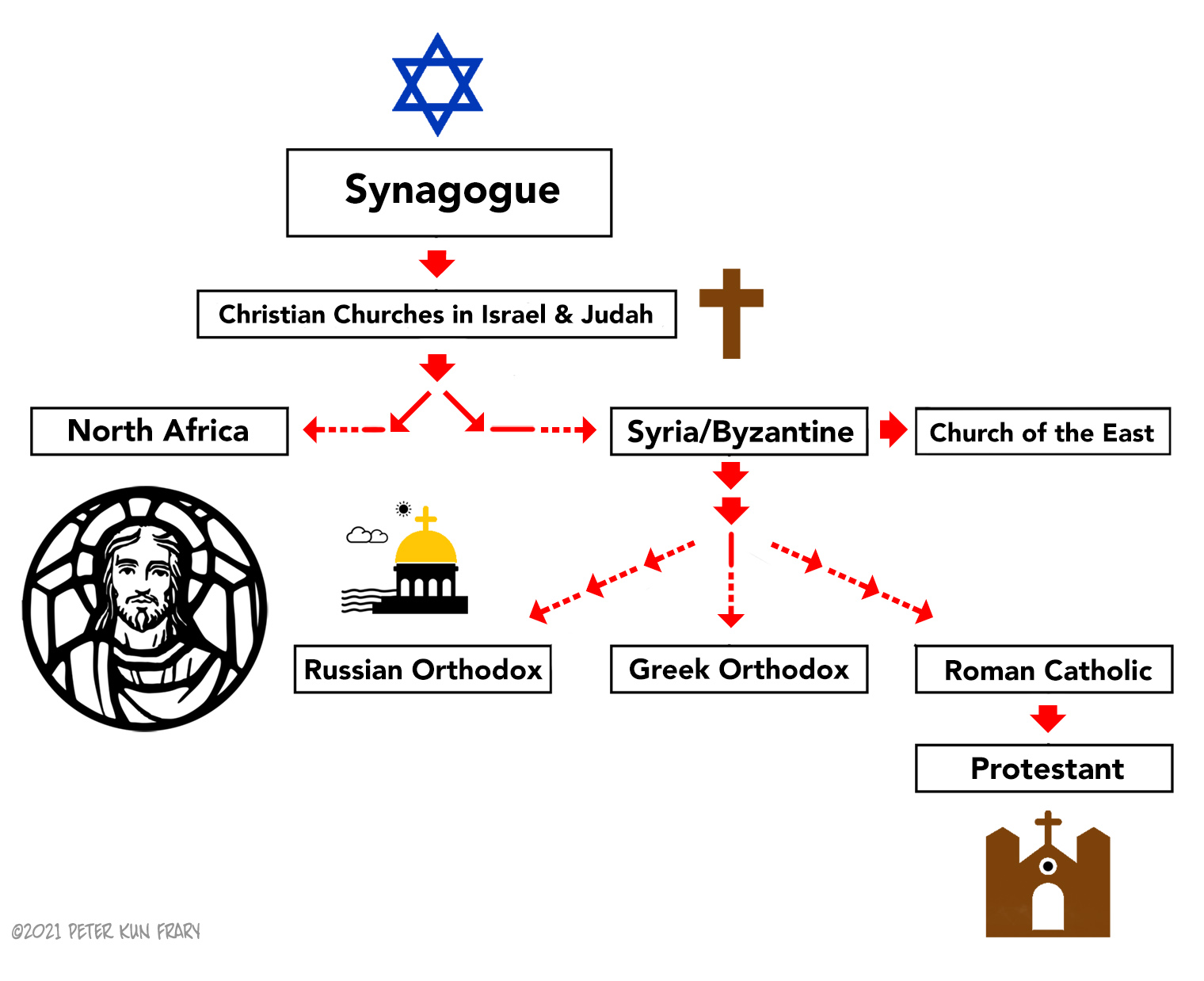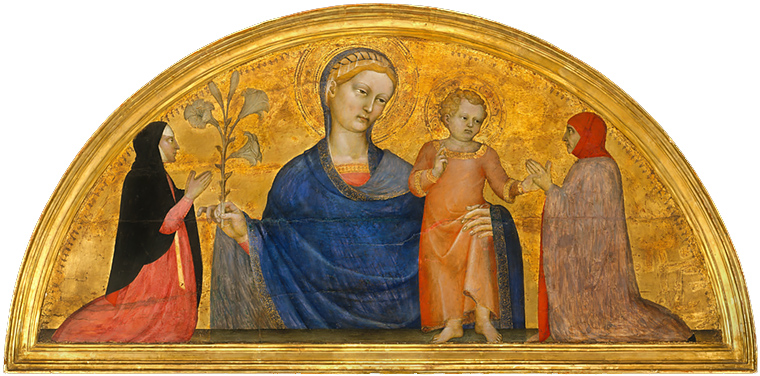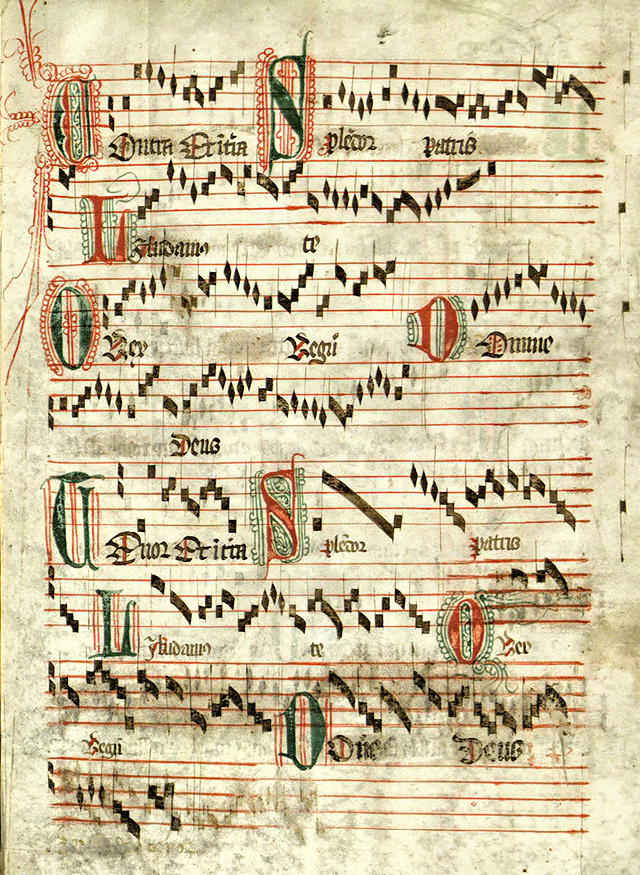|
.
2 | Music In The Middle Ages
Music and the Roman Catholic Church
Peter
Kun Frary
.
Western music history begins with the Roman Catholic Church. Why? The earliest notated European music and music theory texts come from the Church. Music was an integral part of the liturgy and, thus, received significant attention from scholars and Church leadership. Secular music existed but was not notated or seriously discussed in historical records until the latter Middle Ages.
Basilica di Santa Maria del Fiore (1296 CE) | Florence, Italy | ©Peter Frary

Development of Christian Liturgy
Early Christianity was rooted in Judaism. The first Christians were Jews and they brought their rites of worship from the Synagogue. Indeed, early Christianity was initially propagated by Jews within Israel before spreading to Asia Minor, North Africa, Europe, Persia, India and China. Common elements of Christian liturgy such as Holy Scripture, belief in one God (monotheism), singing of Psalms and hymns, prayers and tithe, etc., were adopted from the Synagogue. Thus, many early Christian hymns were simply variants of Hebrew songs.
Early Christian Churches | ©Peter Kun Frary

Ecclesiastical Uniformity
The Catholic Church's emphasis on ecclesiastical uniformity was the main driving force behind music notation development. The alignment of churches across a far-flung empire was essential to maintaining the centralized authority of the Church. Thus, regional chant styles and liturgy gradually faded away. The notation of music, aside from educational and historical benefits, aided in maintaining a common liturgy across thousands of miles.
Madonna and Child with Donors | Giovanni da Milano, 1346–1369 | Metropolitan Museum of Art

 Music Notation Music Notation
The creation of music notation was a momentous development in medieval music. Undeniably, if it were not for music notation, we would have no idea what music sounded like until the advent of audio recording in the 20th century.
Guido of Arezzo | Pitch
Guido of Arezzo (c. 991-1033) was an Italian music theorist and Benedictine monk. While living at Arezzo, Guido developed new techniques for teaching singing, most significantly, the Guidonian hand, staff notation, and solfège (do–re–mi–fa–so–la-ti). These developments are described in his text, Micrologus (c.1025). Although Guido's musical staff was a revolutionary method of indicating musical pitch, it lacked the ability to accurately indicate rhythm or note durations. |
 |
Guidonian Hand
Guido developed a system of teaching singing and music reading by using hand signals, a technique known as the Guidonian hand. Each portion of the hand represents a specific note. For example, when Guido pointed at the base of his thumb, and his students responded by singing the pitch for mi. Variations on the Guidonian hand technique and solfège are still in widespread use today, albeit uncommon in the United States.
Guidonian Hand | 15th century Mantua manuscript | Oxford University MS Canon. Liturg. 216. f.168 brecto (Bodleian Library) | Wikimedia Commons

Franco of Cologne | Pitch and Duration
The next significant stage of music notation development appeared over a century later. Cleric and music theorist Franco of Cologne (c. 1250) developed Franconian notation. His tome, Ars cantus mensurabilis, is an important guide to medieval sacred music practice and a primer on Franconian notation. Franconian notation was the first system to symbolize both pitch and duration. Earlier systems were mnemonic or indicated pitch only. Music notation was refined over the next century and came to be known as mensural notation (measured notation). Mensural notation was widely used in Europe until about 1600.
Early music notation | A Gloria written in mensural notation. | Medieval books were beautifully notated and illustrated by scribes. | Missa Barcelona, Ars nova, c. 1300-1400. | Biblioteca de Catalunya

Vocabulary
Franco of Cologne, Guido of Arezzo, solfège, Guidonian hand, Franconian notation, mensural notation
©Copyright 2018-25 by Peter Kun Frary | All Rights Reserved
|



